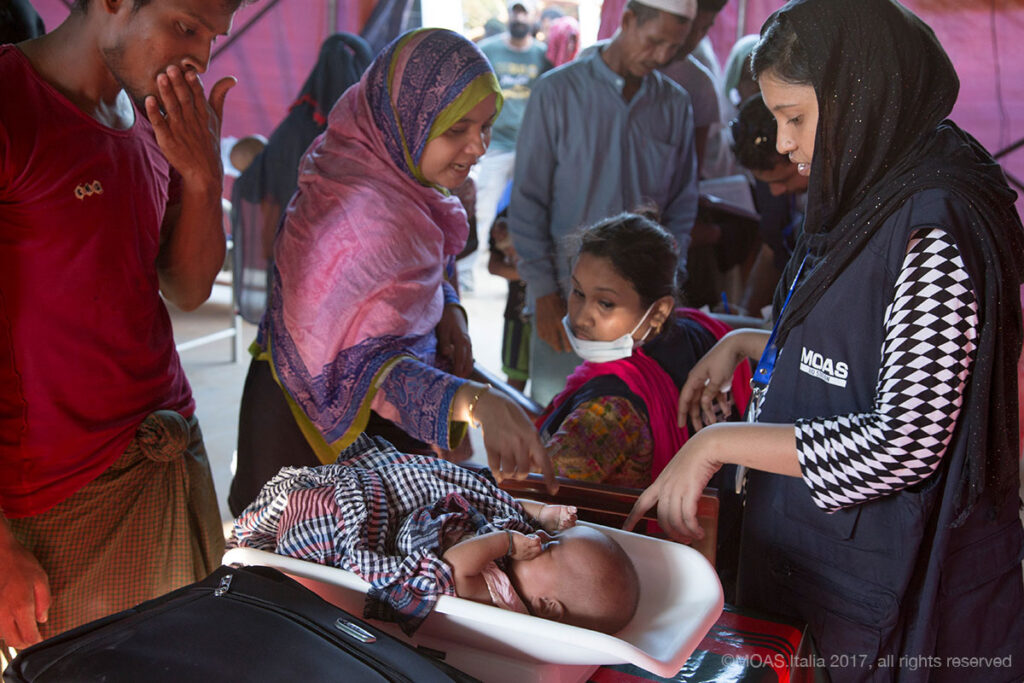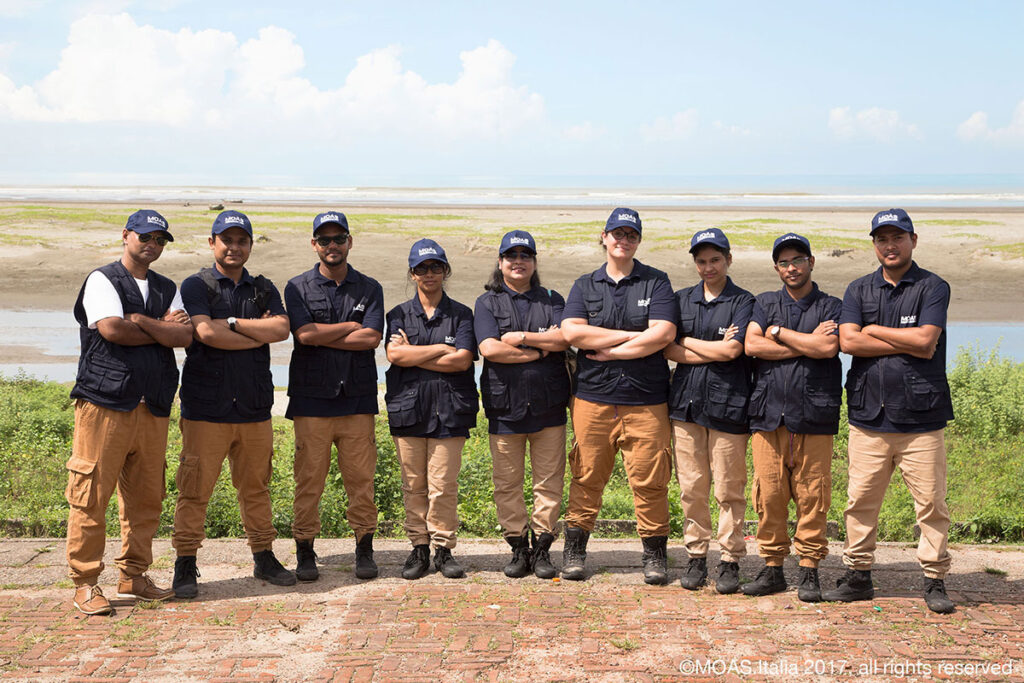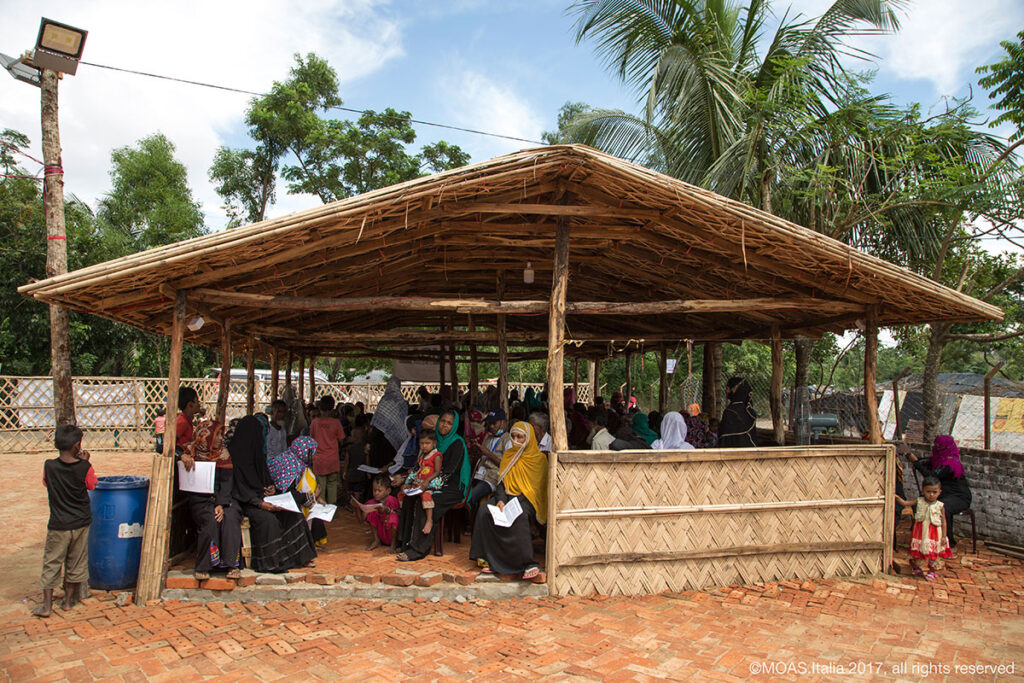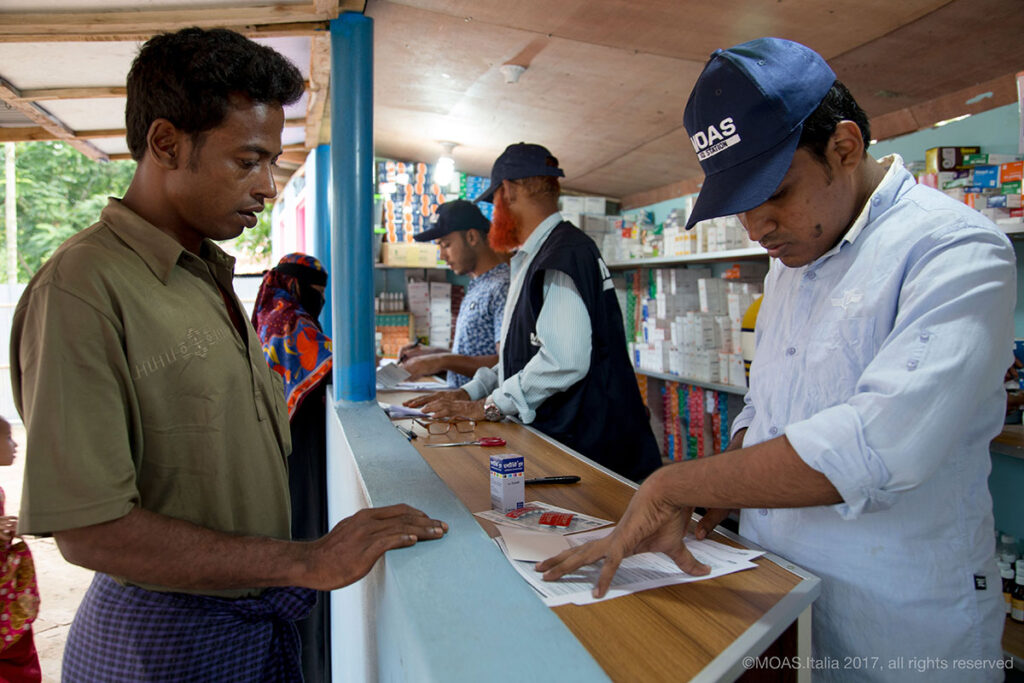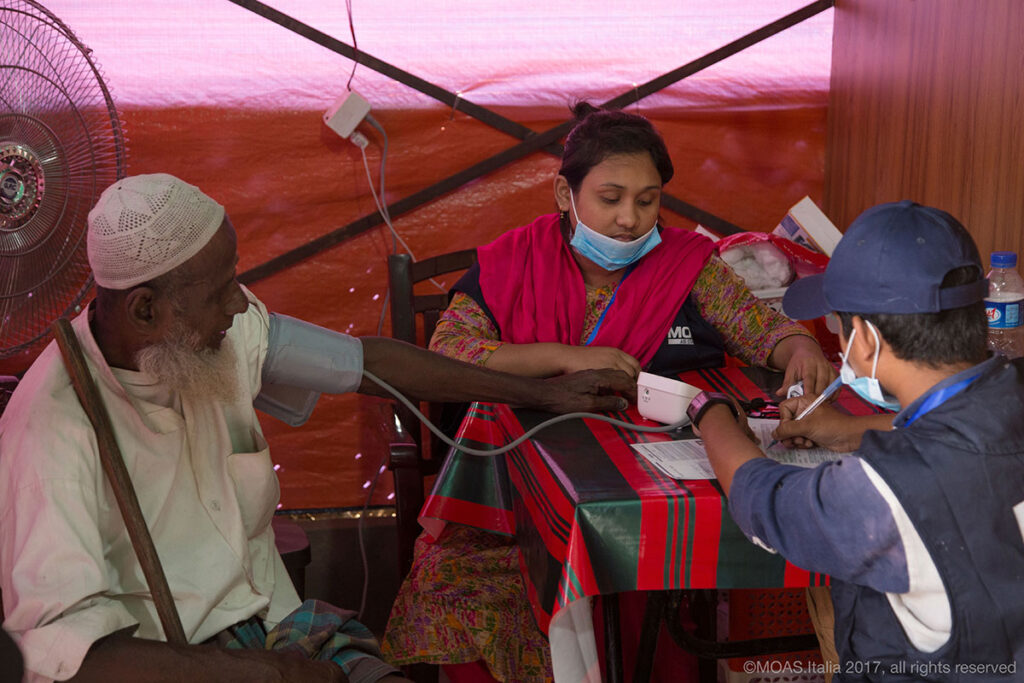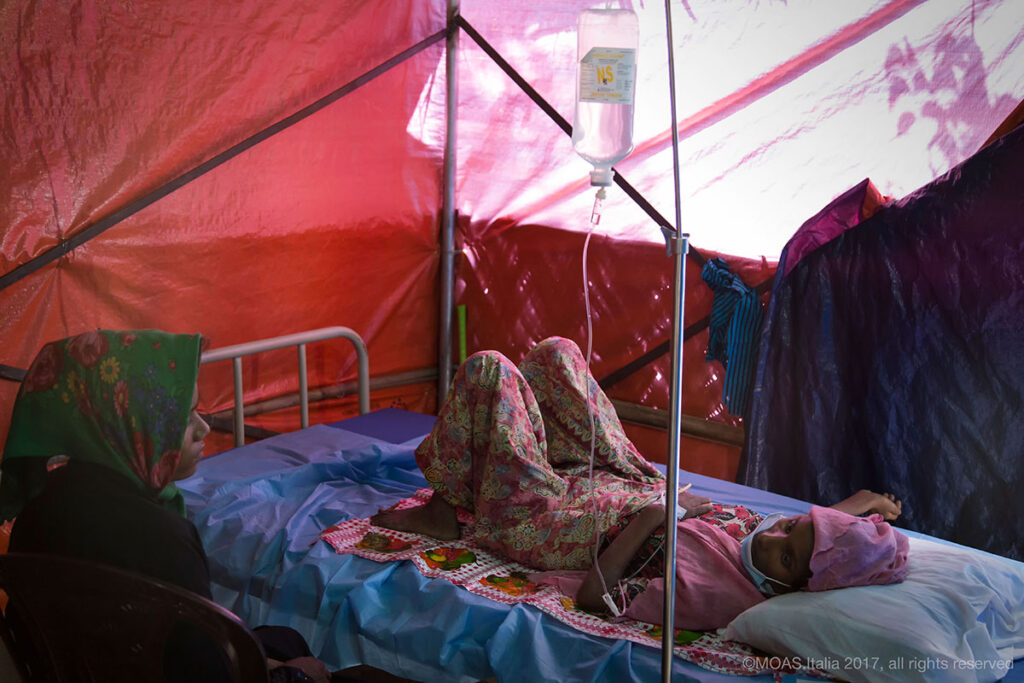The MOAS operations team arrived in Bangladesh on the 3rd of September, among the first organizations on the ground responding to the arrival of hundreds of thousands of Rohingya refugees from Myanmar fleeing violence and persecution in Rakhine State.
The response designed by the MOAS team centres around the formation of field hospitals known as ‘Aid Stations’ , where both Rohingya in nearby camps and the local Bangladeshi population can receive primary and secondary medical care. The first Aid Station was launched on the 14th October in the fishing community of Shamlapur, while the second, near the camp of Unchiprang, was launched less than a month later. The Aid Stations can see up to 300 patients a day and offer comprehensive services from triage to pharmacy.
Here, we explore the setup of the Aid Station and outline the services they provide.
Each Aid Station is staffed by a team of medics, pharmacists, cultural mediators and logistics personnel. The basic MOAS team model at each station includes one Medical Lead with experience in field medicine and a specialty in emergency trauma and medical logistics; four female doctors; four male doctors; six nurses/medical assistants; one midwife; four pharmacists; four cultural mediators; and two security personnel/logisticians.
The Aid Station is made up of four main areas which serve different functions within the clinic: the waiting area, Tent 1, Tent 2 and the pharmacy.
A shaded waiting area with chairs, drinking water and ventilation serves as a waiting room and, on extremely busy days, an initial triage assessment desk is set up for quick classification, manned by a nurse. Once a patient has been assessed at triage the ‘red’ patients (most urgent cases) are taken straight through to Tent 1 to see a doctor. Orange and green patients are given a number (depending on arrival and severity of complaint) and made comfortable in the waiting area.
Once in Tent 1, patients are seen by a doctor who takes a detailed history and assesses their complaints. From here, the patient may be referred to any one of the other services MOAS provides.
Should patients require no further services, they may be referred to MOAS’ free pharmacy for treatments and medications. The doctors limit the number of days’ worth of medicines and instructs them to return for top ups to facilitate regular monitoring by our medics.
If a doctor believes a patient requires additional care they will be referred to Tent 2, where they may access either MOAS’ recovery suite (for fluids, IV medications or monitoring), the maternity room where they are seen by a midwife and an OBGYN, or our surgical area where a surgeon can perform minor surgeries and trauma treatments in-house.
Should a patient’s condition be deemed urgent, or deteriorate while on site, our own MOAS ambulance is on hand to transfer to the local hospital, with which MOAS has an ongoing relationship. For cases of malnutrition – of which there are sadly many – MOAS refers patients to a specialist service available in the region, while suspected cases of communicable disease are brought to the attention of centralized health agencies and the civil surgeon for monitoring and epidemiological awareness.
In addition to these medical services, MOAS Aid Stations also act as a place of rest and reflection. There is a prayer room within the compound and sanitation facilities for the patients. Many children visit the Aid Station during the days, waiting in the shade, drinking the safe water, and waiting for school to start.
MOAS’ aim is to become more than just a field hospital, but also a central space within the community where both Bangladeshi and Rohingya can be heard, supported, treated and referred. MOAS aims to establish two additional Aid Stations of this model in coming months, as well as one comprehensive facility which will offer approximately four times the capacity of this model and will be strategically placed where the density of refugees is highest.
Below is a full walk-through of the Shamlapur Aid Station:
If you are interested in helping MOAS achieve our goals, please give what you can on www.moas.eu/donate or consider becoming a fundraising activist on www.moasfundraising.com. Spread the word about our work by sharing our stories on social media and sign up to our newsletter for regular updates.

